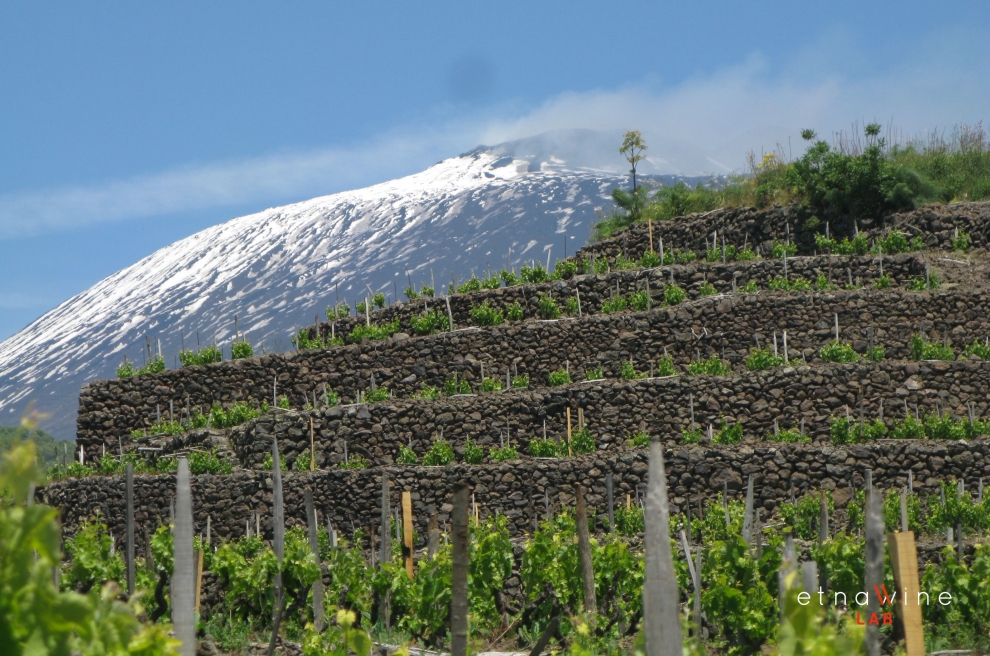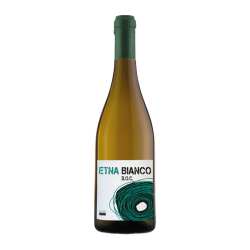Wines
Etna Rosso Feudo di Mezzo doc
The experience and the dream of Etna every day, in a glass of wine. The greatest quality of Etna Rosso is perhaps that of being able to be both a complex wine, with many olfactory and taste tissues - as well as being able to age in the versions designed for it since the yield in the vineyard and with aging in wood - is a wine with a prompt and sincere drink, perfect for everyday life, without necessarily having to exceed in interpretations and sophisms around it. In all seasons.
| Production Area | northern slope of Mt.Etna, Castiglione di Sicilia |
| Contrada: | Feudo di Mezzo |
| Climate | high hills, with significant temperature variations between day and night |
| Soil: | volcanic sand, deep, fertile and rich in microelements, with subacid reaction |
| Altitude: | 700 m.a.s.l. |
| Grape variety: | Nerello Mascalese 100% |
| Training system | alberello technique (free standing and ungrafted “little trees”), some vines are centennial |
| Density of implantation | : 7000 stumps per hectare |
| Yield | 6,0-7,0 tons/ha |
| Alcohol content: | 13% |
| Grape harvest: | handpicked with selection of the bunches |
| Vinification: | manually harvested grapes are partially de-stemmed and fermented by the indigenous yeasts, with a 15 days maceration of the wine with the skins. The wine is aged for about 12 months in oak barrels, then it’s moved into a steel tank where it is decanted naturally and bottled without any clarification or filtration process |
| Ageing in the bottle: | at least 6 months |
| Estimated aging capacity: | at least 10 years |
| Tasting temperature | 16-18°C |
| Tasting notes | wine with a ruby red color tending to purplish. The nose expresses very fine and delicate notes of small red fruits, mineral stamps, wild spices, medicinal herbs and cloves. Balanced and harmonious wine, well structured, with mineral veins, savory and persistent finish, and great elegance |

Massimo Lentsch
Massimo Lentsch wanted to embark on another adventure on volcanic soil, this time challenging Mount Etna, an eruptive volcano, to create a niche wine production with unique characteristics of charm and elegance. All operations are carried out strictly by hand. The grape ripening stages are controlled for each individual plant, and the harvest is wisely decided on the basis of what you want to get from the final product. The differentiated management of each single vine allows to provide promptly and effectively to every need, and to fully understand the dynamics of the complex "vineyard system”.
Vigna Cosentino, from which the Cru Etna Rosso DOC Cosentino is produced, is characterised by centenary trees, with various pre-phylloxera and free foot plants. The classic Etna Rosso DOC San Teodoro is produced from the vineyard just below the terraces that collect these splendid old vines. Also in this vineyard there are saplings with a free foot and well over sixty years old.

Sicilia
Like much of the Italian mainland, Sicily’s winemakers have moved away from producing high-volume, unremarkable wines, to focus on quality wines of great character. Its dry, well-structured red and white wines could not be further removed from the sweet Marsala and Moscato of the island’s past, and this has not gone unnoticed by international markets that have never had such a thirst for Sicilian wines. Sicilian producers have paved the way for other Southern Italian winemakers to begin to exploit the country’s rich environmental diversity, with wines that achieve the potential first admired by the Greeks and Romans.



